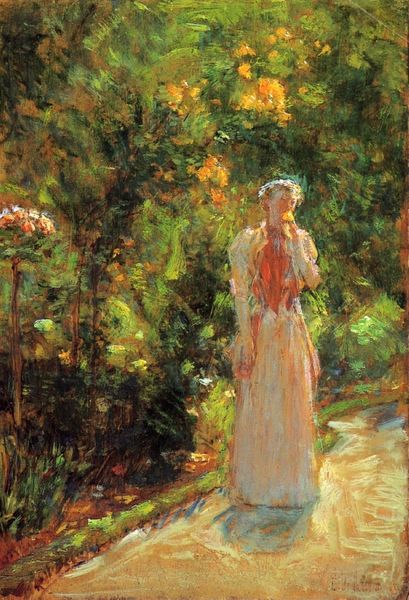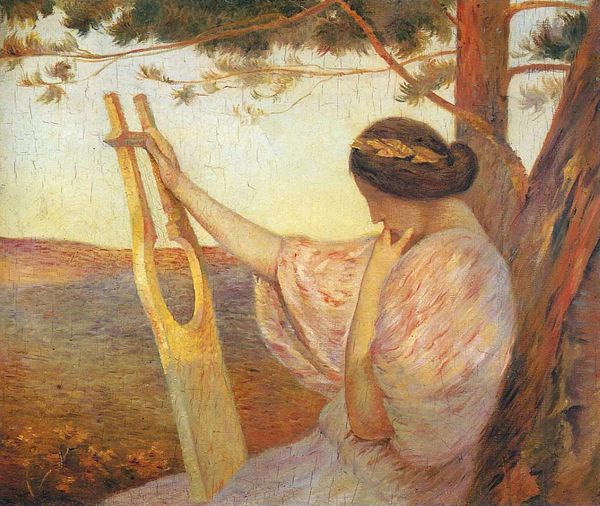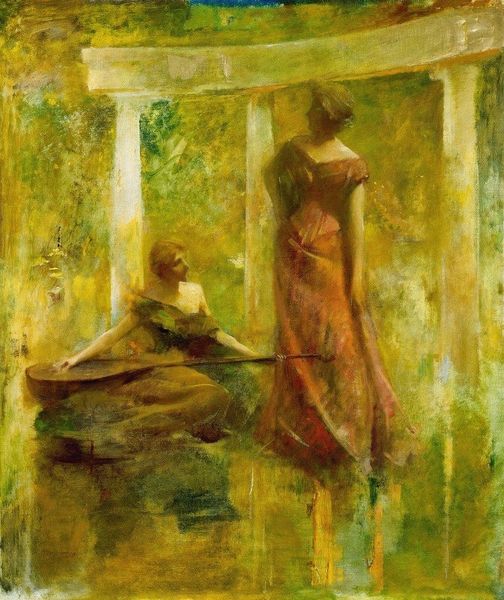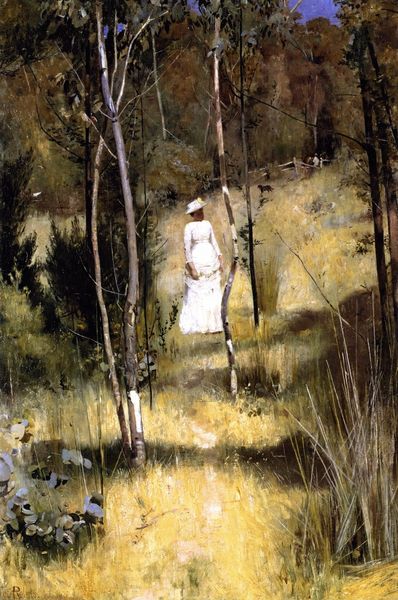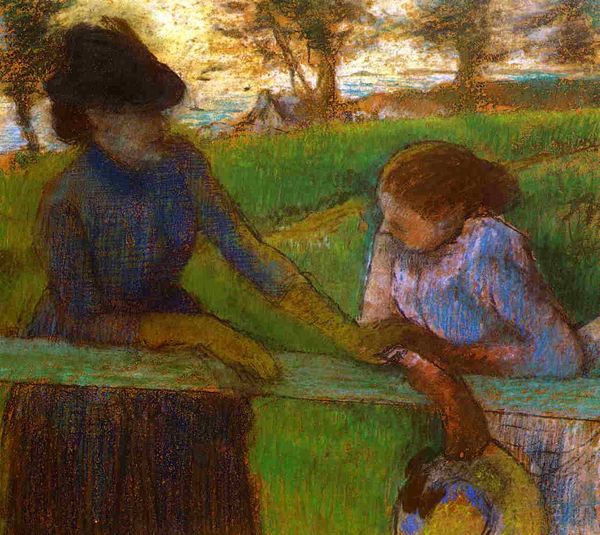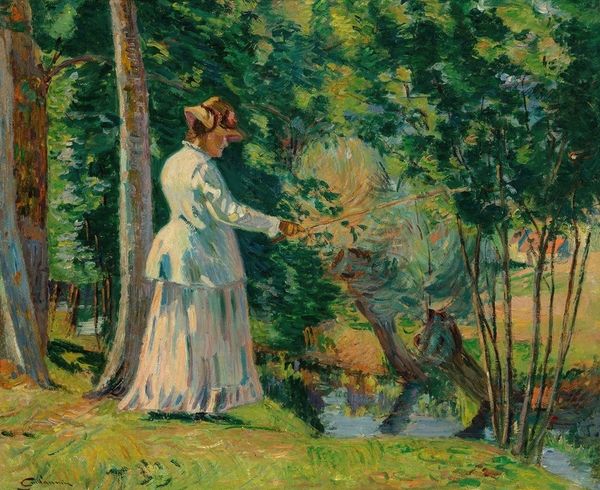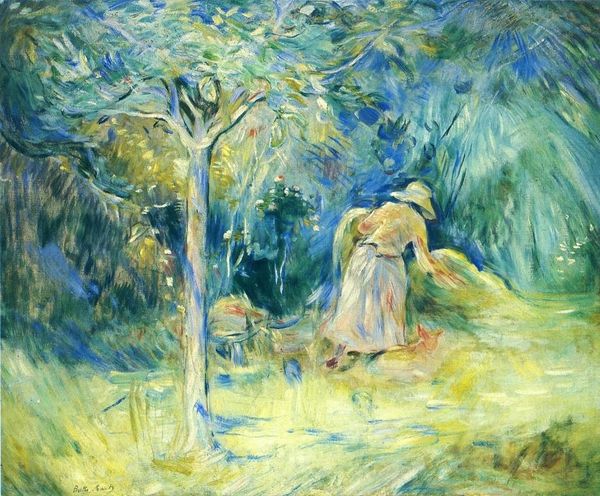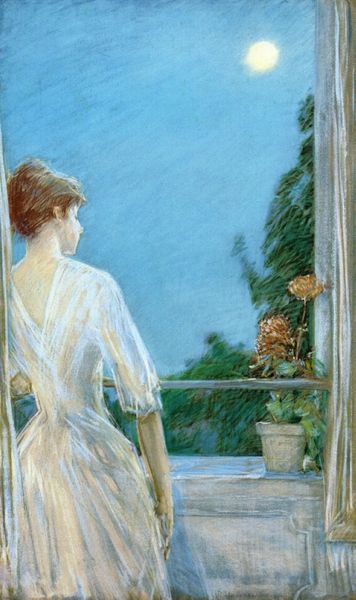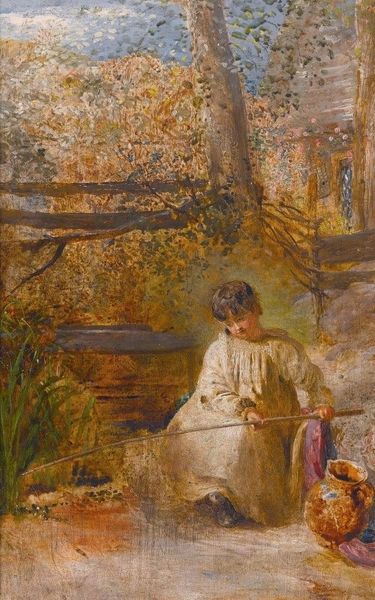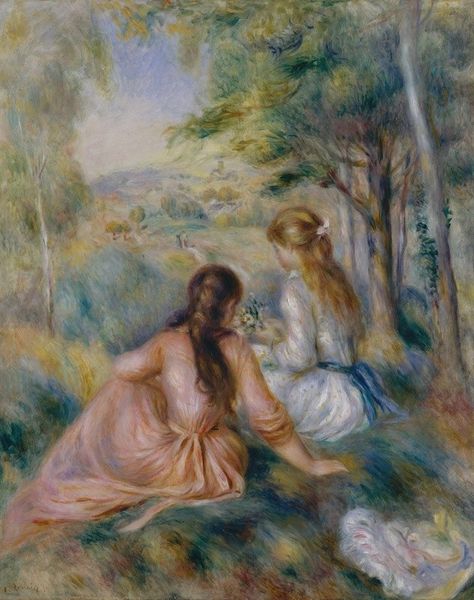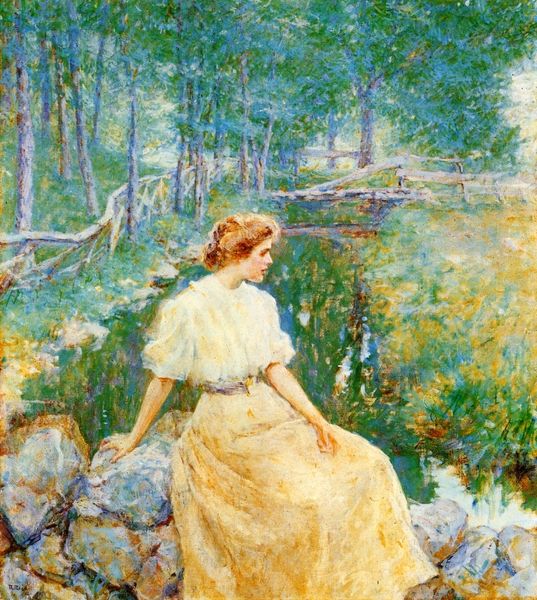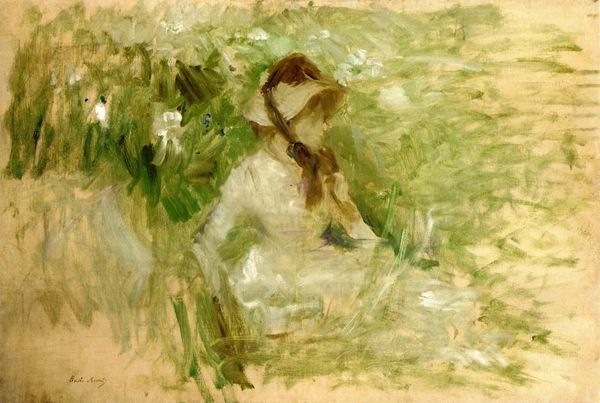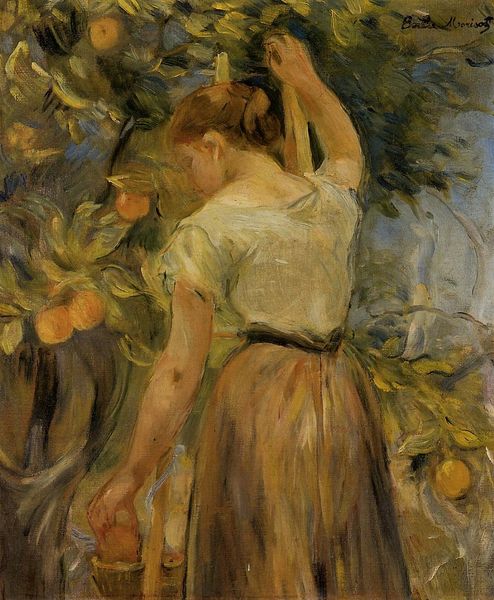
plein-air, oil-paint
#
portrait
#
tree
#
impressionist
#
impressionism
#
impressionist painting style
#
plein-air
#
oil-paint
#
landscape
#
impressionist landscape
#
figuration
#
forest
Copyright: Tetyana Yablonska,Fair Use
Curator: It evokes such a tranquil, almost wistful feeling, doesn't it? Editor: It certainly does. We’re looking at "A Smell of a Lime Tree" by Tetyana Yablonska. Though undated, it clearly demonstrates an engagement with plein-air painting. Note the quick, broken brushstrokes of oil paint, capturing a fleeting moment, perhaps a specific quality of light. Curator: It’s predominantly the material handling that grabs me first. The palpable impasto, particularly in the depiction of the woman's dress, practically begs to be touched. Editor: The figure gazing outward, perhaps a self-portrait, is framed in this interesting liminal space between the inside and outside. Consider Yablonska's position as a Ukrainian artist working through much of the 20th century, often tasked with socialist realist ideals, yet exploring intimate, domestic scenes like this one. There's a quiet tension here. Curator: I am curious about how much ready-made paint was used to create the subtle gradients here, and whether these were paints from a Ukrainian or European factory. The application looks hasty, immediate almost, probably implying a high production of paintings made using a similar technique. I would consider this as painting done on site, possibly as one painting among many, each documenting that place from diverse viewpoints. Editor: Yes, this liminality suggests deeper dialogues about freedom, societal expectations for women and artists. Does she seek escape or does she yearn for nature as the main agent of escape? What were the opportunities afforded for women during the rise and fall of Soviet rule and art? Curator: That consideration expands my thinking to the type of linen the work is painted on, the brushes used... these physical items shape the painting just as much. Editor: Indeed, this one canvas, rendered with visible, expressive strokes, echoes a much wider narrative of its own and the artist's time and place. It reminds me of the need to critically reassess whose histories get prominently displayed, considering the stories we attach to seemingly tranquil settings like these. Curator: On reflection, its simple composition speaks volumes about how ordinary materials and situations can produce extraordinarily sensitive statements. Editor: And perhaps more crucially, invites questions about access, visibility, and who gets to shape those statements and whose perspectives are centered in art and history.
Comments
No comments
Be the first to comment and join the conversation on the ultimate creative platform.
